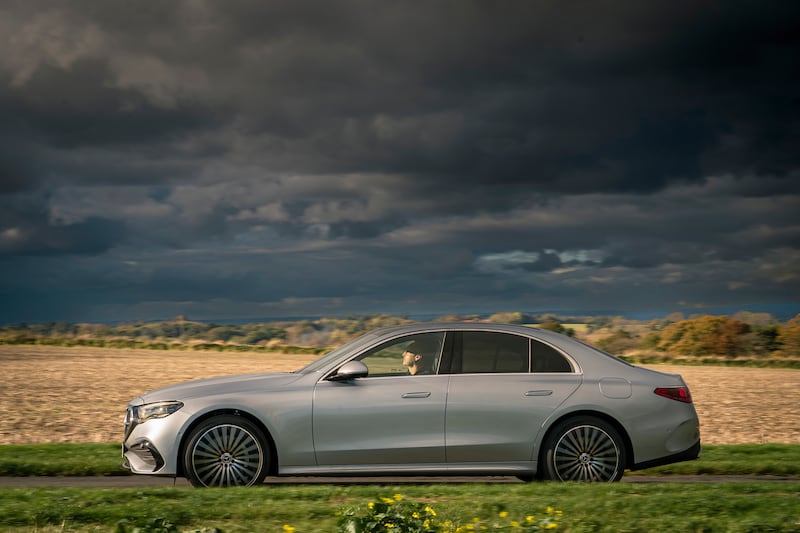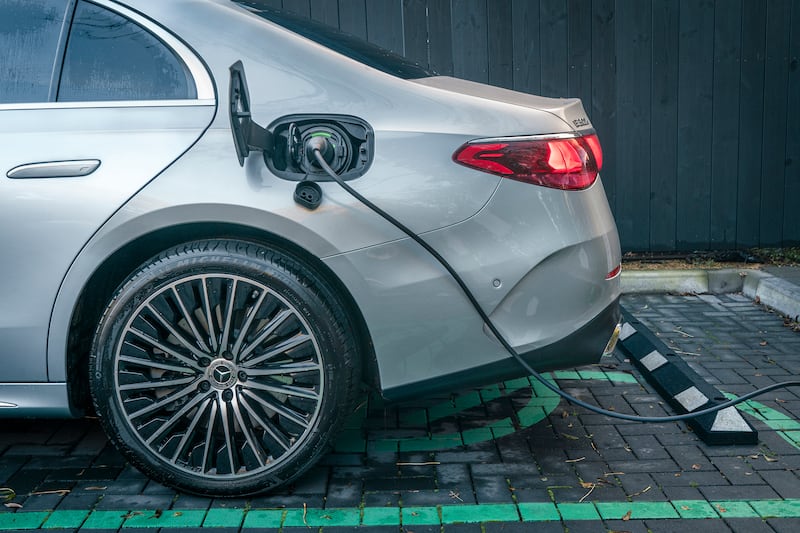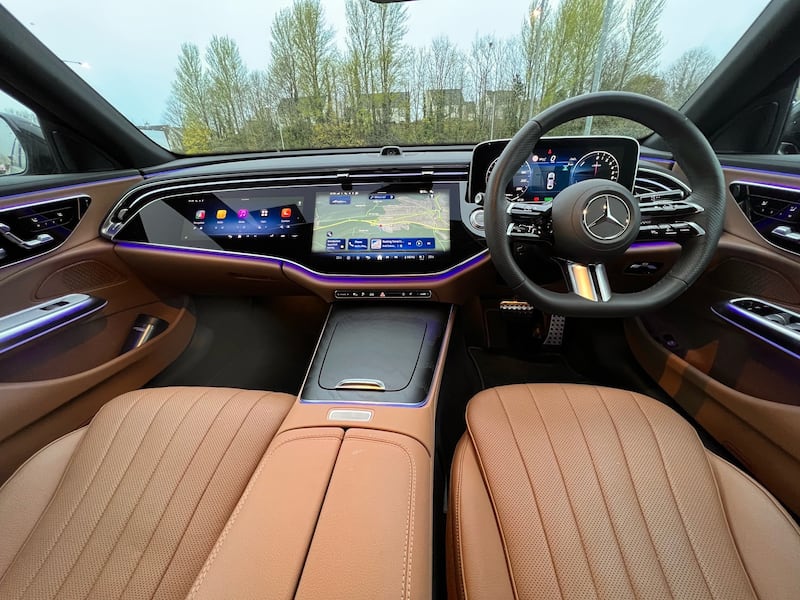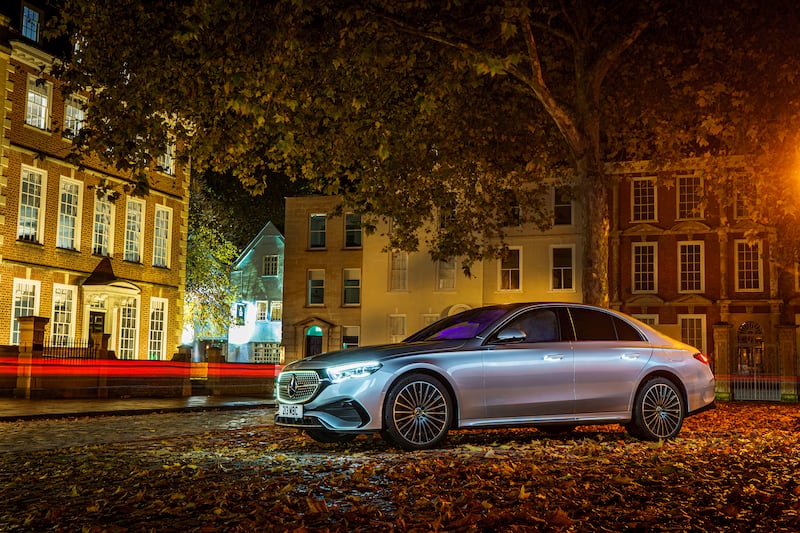Are plug-in hybrids about to have a moment? Just maybe. Many car buyers are currently holding back on taking the fully-electric plunge, fearful of the march of technology and the lag of infrastructure.
Plug-in hybrids – or PHEVs – were once derided as “fake electric cars” by prominent eco think tank Transport & Environment, but new models are now starting to arrive with genuinely lengthy electric ranges thanks to bigger batteries.
Equally, the old complaint that “PHEVs get returned with their charging cables still in the wrapper” does seem to ignore the possibility that many people were charging from points with built-in cables.
Certainly, the popularity of PHEVs has increased in Ireland. So far this year, sales of new electric cars are down by 15 per cent, but PHEVs have gone up by 8.3 per cent.
READ MORE
Into this occasionally political morass wades the new Mercedes-Benz E-Class. We’ve already tried out the diesel-engined version (yes, you can still buy a diesel E) but this is the latest E300e, a plug-in hybrid with petrol power mixing with battery propulsion.
This isn’t the first plug-in hybrid E-Class, but it is certainly an improved one. The battery capacity has gone up to 24kWh, and that gives the E300e a claimed range of 116km.

We’re all becoming drearily used to the fact that claimed electric ranges – for both PHEVs and fully-electric cars – are too often catalogued under ‘fiction’ but with this E300e, it’s more like fact-based fiction.
No, we didn’t manage to get 116km out of one charge, but starting from a full charge, we hustled up the M1 motorway from Dublin Airport, in driving rain, cruising at the legal speed limit whenever the traffic cleared up enough, and with the heating system and heated seats going strong (it was chilly out).
The result? Ninety kilometres of electric range, enough to take us almost all the way to the Border. For the rest of the journey, with the petrol engine running, we averaged 4.8 litres per 100km fuel economy.
Doubtless that economy would be much worse if you started the journey with a flat battery, but still – it shows the potential for PHEVs to act, for a great deal of their time, as effectively electric cars. Ninety kilometres of motorway range ought to translate, at least, to 100km of range on slower roads and urban streets, so suddenly here is a PHEV which, assuming you can charge at work, at home or both, can genuinely get you from one end of the week to the other without burning any petrol.

The battery in our test car charges at a reasonably brisk 11kW on AC power, taking a little over two hours to fully charge and optionally you can boost that to 55kW on DC fast-chargers, although prepare for Nissan Leaf owners to surround you with pitchforks and torches if you try that one.
Inside, this E300e does not look or feel like an economy model, in spite of our recorded fuel consumption. The (man-made) leather seats are soft and supportive, and finished in a lovely caramel brown colour. Our test car came with the optional ‘superscreen’.

This is lesser nobility than the massive ‘hyperscreen’ of the S-Class and EQS models, as it keeps a separate driver’s display screen behind the wheel, but the rest of the dash is in one piece, with the main infotainment screen and a tertiary passenger’s side screen tucked beneath a common cover. It looks spectacular, but in practice the extra passenger screen proves superfluous – my 13 year old didn’t give it a second glance.
The E330′s refinement is excellent, even if the four-cylinder petrol engine gets a touch noisy at times when it’s needed, but some compromises have been made to turn this into such an effective plug-in hybrid.
The most obvious of these is space. The big battery eats into boot space something chronic, leaving you with a shallow space of just 360 litres in the boot (down from the diesel or petrol E-Class’s 550 litres). There is a solution to this, of course – buy the E-Class estate, which is just as space-poor below the luggage cover, but unlike the saloon you can load the estate above the luggage cover. However, rear seat space also feels a bit tight, something that has seemed true of the E-Class ever since the exceptionally roomy W212 version went out of production back in 2016.
The other compromise is the ride quality. We see this a lot with PHEVs, and with electric cars that share a platform with combustion-engined models. The suspension just seems to find it difficult to cope with the conflicting demands of a comfy ride, and yet needing to keep the extra mass and weight of the hybrid system and battery under control. (This PHEV has a kerb weight heading for 2.3 tonnes.)
The ride is never harsh, exactly, but it is slightly lumpy in a way that just seems a little undignified for an E-Class. Optional Airmatic air suspension would probably sort all this out, but it’s a €4,400 option (ditch the superscreen and put that €2,500 towards it).
The handling is generally very good, with sharper steering than you’d expect, but again the weight pegs back the amount of fun you can have. Performance is strong, though. Even running on just the electric motor, which provides 95kW of grunt, motorway cruising is easy. When you combine petrol and electric you get 313hp and 550Nm of torque, which will easily overcome that chonky kerb weight.

Does the E300e settle the argument in favour of plug-in hybrids? Up to a point, yes it does. It has a truly useful and effective electric range, one that’s long enough for you to seriously not need to use the petrol engine very much at all, and it can still prove economical on a longer run when you need it to.
However, there is always the trip wire of ‘it’s how you use it’. PHEVs, even a very good one such as this one, are useful from an environmental point of view only if you keep that battery topped up and maximise your electric mileage, a choice that pure-battery models don’t give you.
With that caveat in mind, though, the E300e is pretty accomplished and has truly impressive all-round performance. Just give me the estate version to fix that shallow boot issue and I’d walk away happy.
Lowdown: Mercedes-Benz E300e AMG Line Plus
Power: 2.0-litre four-cylinder petrol engine with 95kW motor and 24.0kWh lithium-ion battery producing 313hp and 550Nm of torque and powering the rear wheels via a nine-speed automatic transmission.
CO2 emissions (annual motor tax) 13g/km (€140).
Fuel consumption: 0.96l/100km (WLTP).
Electric range: 116km (WLTP)
0-100km/h: 6.4 seconds.
Price: €87,571 as tested, E-Class starts from €79,785
Our rating 4/5.
Verdict: Gorgeous cabin and a hugely impressive hybrid system with genuine 100km potential. It really needs the optional air springs, though.













